1. Site selection
Curating in rural dwellings is not only about the location of the artwork, but also about how the venue becomes the artwork itself. In Yudong Village, Quzhou, a village known as the “hometown of peasant paintings”, I hope to create an experience that does not impose art on the village, but allows art to grow from within the village.
The exhibition is set in the homes of local villagers, a familiar space where people live, with walls, kitchens and stairs bearing traces of time and labor. The choice of this venue is not accidental. Unlike the White Box Gallery, this rural dwelling has its own unique curatorial grammar – smoke marks on the kitchen walls, cold stone steps, and the aroma of drying herbs.
2. Artists and artworks
Yu Tongshan – Bamboo Weaving Paintings
Yu Tongshan is a local artist in Yudong who pioneered the fusion of traditional bamboo weaving techniques with the aesthetics of peasant paintings. His works use bamboo as a structure, which also symbolizes the tenacity, touch and intertwined relationships of the countryside. Exhibiting his semi-finished bamboo paintings emphasizes the creative process rather than the work itself, inviting viewers to touch, examine and understand the labor itself.
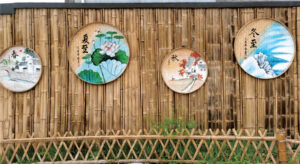
Zhang Xinying – Stove Painting
In the kitchen-themed section of the exhibition, I chose Zhang Xinying, the initiator of the “Stove Room” project, as the featured artist. Her work focuses on the daily labor of rural women, family memories, and the intimate emotional texture of family life. In “Stove Room”, Zhang Xinying uses documentary photography, text, and visual installations to explore how the stove is not only a cooking tool, but also carries social memory, gender labor, and emotional inheritance.
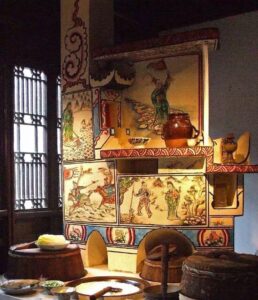
Traditional Stove Painting
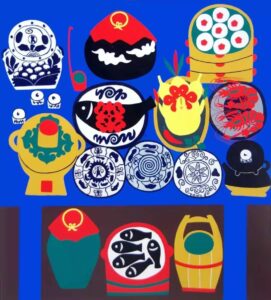
A Role in the Kitchen By Zhang Xinying
Village Farmer Murals – Artist’s Village
In Yudong, the village itself is a canvas. Many villagers’ homes are painted with large farmer murals, which are often created collaboratively during festivals or community beautification projects. These works depict farming scenes, weddings, dragons, and markets. This practice is consistent with the concept of “My Village”: art does not need to be introduced to the village. It has long existed and has grown together with people’s lives.
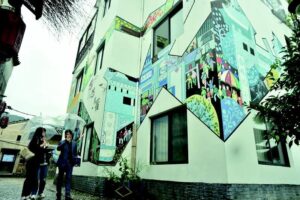
Mural in Yudong Village
Contemporary Chinese Peasant Paintings – Living Traditions
Finally, the exhibition selects the creation of Chinese peasant paintings in recent years, covering themes such as digital agriculture, e-commerce, and environmental change. The works reflect how rural aesthetics can be adapted to the 21st century without losing their bold colors, narrative density, and social warmth.
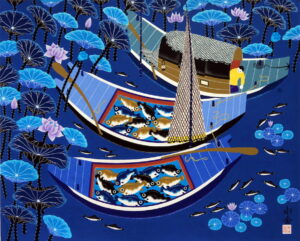
Return of Fishing By Zhu Yongjin
References
Bishop, C. (2012). Artificial Hells: Participatory Art and the Politics of Spectatorship. London: Verso.
Bourriaud, N. (2002). Relational Aesthetics. Dijon: Les Presses du Réel.
Curtain, A., & Spring, M. (2019). Curating the Rural: Art, Ecology and Space. Edinburgh University Press.
Kwon, M. (2002). One Place After Another: Site-Specific Art and Locational Identity. Cambridge, MA: MIT Press.
Myvillages. (n.d.). Projects and Publications. Retrieved from https://myvillages.org/
Documenta Fifteen – Jatiwangi Art Factory. (2022). Lumbung Artists. Retrieved from https://documenta-fifteen.de/en/lumbung-members-artists/jatiwangi-art-factory/
Deveron Projects. (n.d.). Town Collection. Retrieved from https://www.deveron-projects.com/town-collection/
Simon, N. (2010). The Participatory Museum. Museum 2.0. Retrieved from https://www.participatorymuseum.org/


Leave a Reply